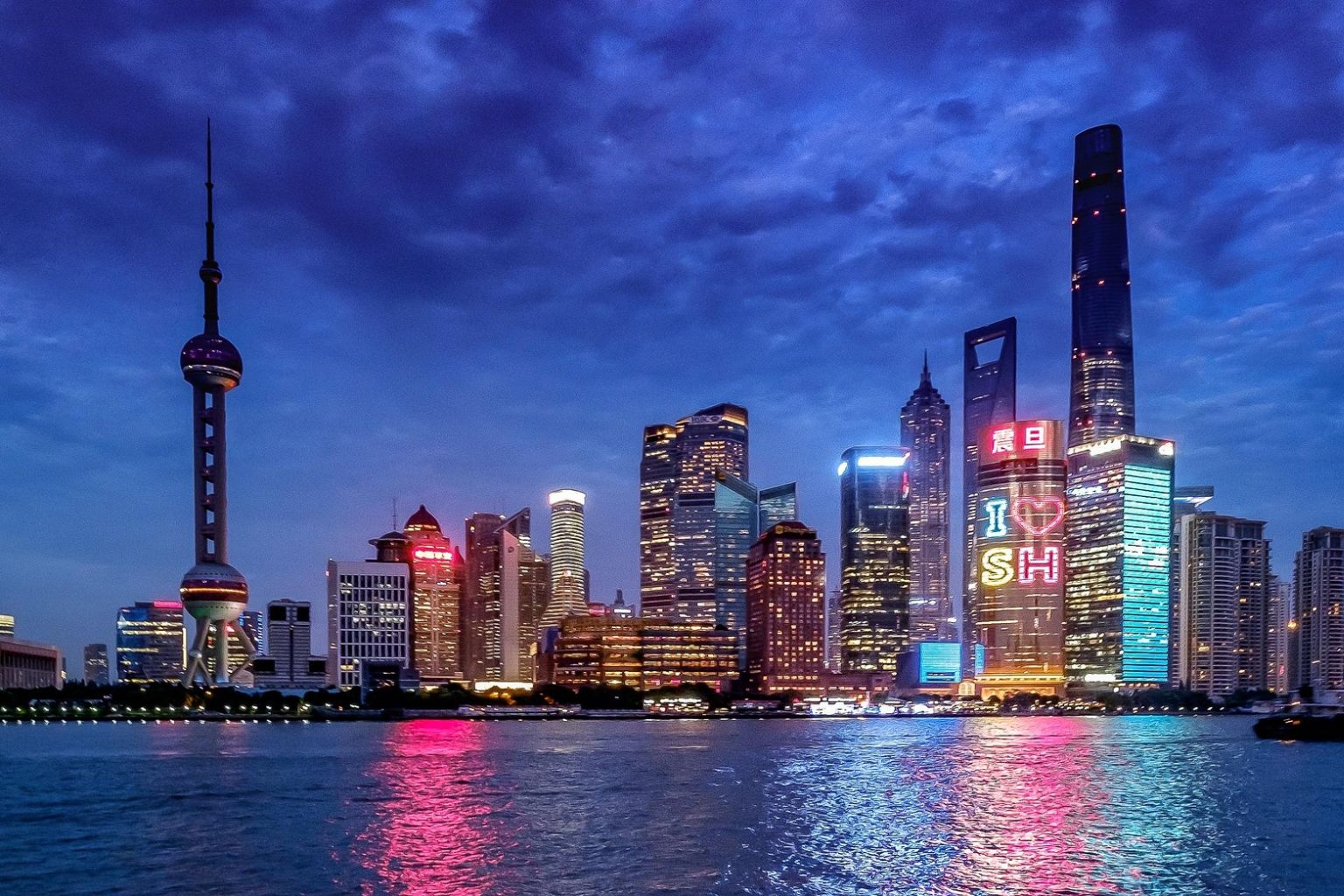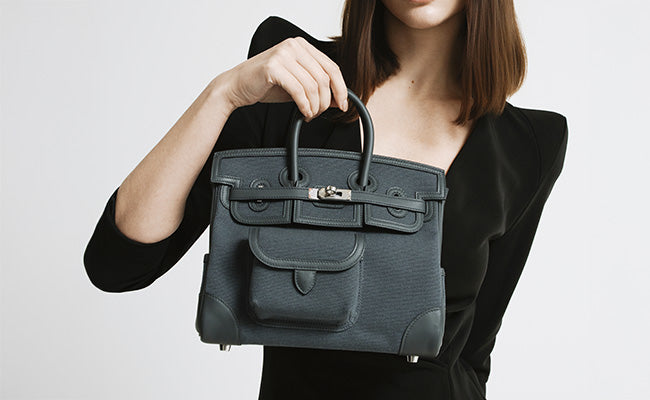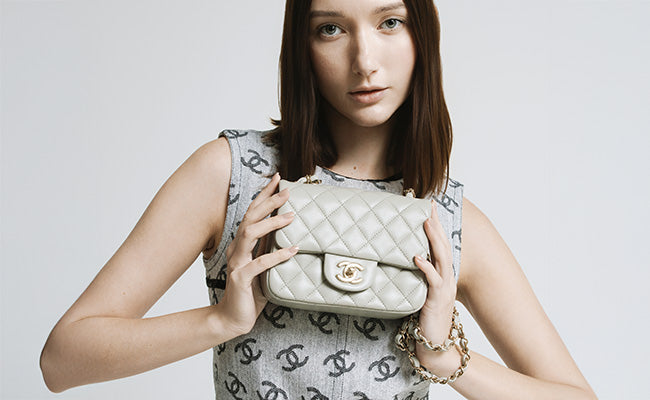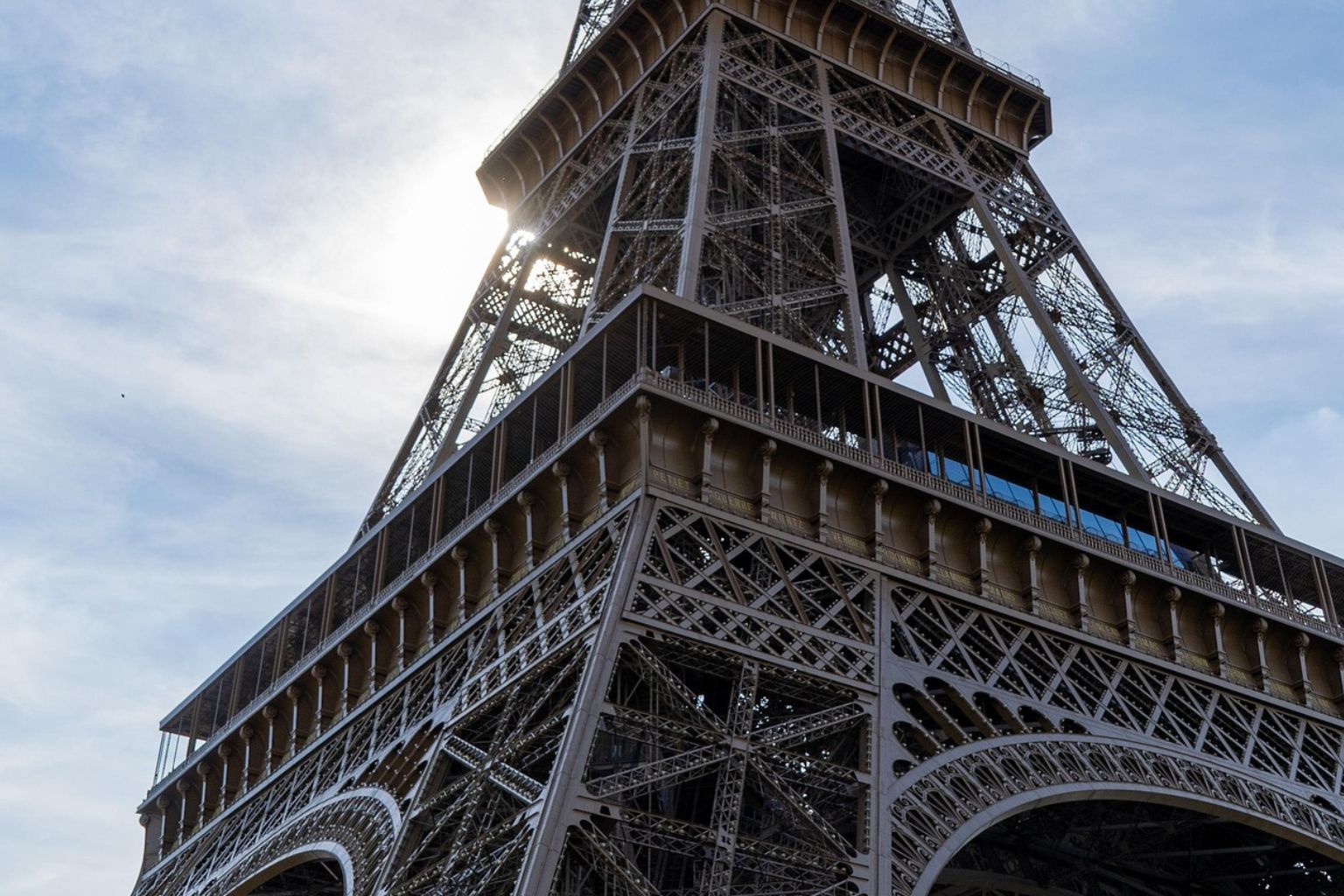
Luxury Sales Tax in Canada: Out‑of‑Province and International Scenarios
Check out our Hermès collection and Birkin bags!
Canada's luxury tax scene got a lot messier when the Select Luxury Items Tax Act landed in September 2022.
Thinking about snagging that Hermès bag in New York or importing a luxury yacht from Europe? Better get clear on how cross-border shopping could hit your wallet.
The luxury tax hits vehicles and aircraft over $100,000 and vessels over $250,000, no matter if you buy them in Canada, from another province, or internationally.
Mess up the details, and you might get slapped with a tax bill that makes even the priciest handbag look cheap.
If you're a collector building your dream garage or a business trading high-end toys, knowing the ins and outs of cross-border luxury tax can save you plenty of headaches.
Let's dig into what matters, registration, how the tax is calculated, and what you have to file, depending on where you're buying.
Key Takeaways
- Canada’s luxury tax covers vehicles and aircraft over $100,000 and vessels over $250,000, wherever you buy them
- Cross-border luxury buys mean you need to register, file, and remit taxes the right way
- Knowing the calculation methods and possible credits for out-of-province and international deals can save you from expensive mistakes
Understanding Canadian Luxury Sales Taxes
Canada’s tax system is a patchwork of federal and provincial rules, and luxury shopping only makes it trickier. The Canada Revenue Agency (CRA) runs the federal show, but provinces set their own sales tax rates and rules.
Key Types of Sales Tax: GST, HST, PST, QST, RST
If you’re eyeing a luxury item, you’ll want to know how sales taxes stack up. The Goods and Services Tax (GST) is 5% everywhere in Canada.
The Harmonized Sales Tax (HST) blends GST with provincial tax in some provinces. Ontario is at 13% HST, while Nova Scotia, New Brunswick, and Newfoundland and Labrador hit 15%.
Other provinces do their own thing. British Columbia adds a 7% Provincial Sales Tax (PST). Alberta? Just the 5% GST, nothing more.
Quebec runs its own Quebec Sales Tax (QST) at 9.975%, calculated on top of the GST. Saskatchewan and Manitoba have Retail Sales Tax (RST) at 6% and 7%.
These numbers add up fast. A $150,000 Hermès Birkin in Ontario? That’s $19,500 in HST alone.
How Sales Tax Differs for Luxury Goods
Canada rolled out the Select Luxury Items Tax Act on September 1, 2022, layering on extra tax for certain big-ticket buys. This luxury tax goes after vehicles and aircraft over $100,000 and vessels over $250,000.
The luxury tax is whichever is less:
- 10% of the total price
- 20% of the amount above the threshold
So, a $150,000 luxury car gets hit with either $15,000 (10% of $150,000) or $10,000 (20% of $50,000 over the threshold). You pay the lower number here, $10,000 plus regular sales taxes.
If you upgrade your luxury ride and push it past the threshold, you could owe more luxury tax. Those custom touches aren’t always just for show.
The luxury tax applies to purchases, imports, and long-term leases. It doesn’t replace regular sales taxes, it’s just another layer.
Who Administers Canadian Sales Taxes
The CRA takes care of all federal taxes, including GST and the new luxury tax. They handle registrations, returns, and enforcement.
HST provinces let the CRA collect both federal and provincial portions, which is a bit easier. Non-HST provinces run their own sales tax offices. Quebec’s QST is run by Revenu Québec, and BC, Saskatchewan, etc., have their own PST setups.
For luxury tax, the CRA wants vendors to register and file special forms (B500 and B501). If you’re selling luxury stuff, you have to juggle both provincial and federal rules.
So, depending on where you buy, you might have to deal with more than one tax office.
Luxury Sales Tax for Out‑of‑Province Purchases
Buying a luxury car or yacht from another province? Things get complicated fast. The so-called "place of supply" rules decide which province’s tax you pay, and rates are all over the map.
Determining the Correct Provincial Tax
The trick with out-of-province luxury buys is figuring out where, for tax purposes, the sale happens. That decides if you pay HST, GST plus PST, or something else.
Usually, the seller’s location sets the initial tax. But if you’re buying from a province with lower taxes and bringing it home, your province may want more money when you register.
HST provinces (Ontario, New Brunswick, Nova Scotia, Newfoundland and Labrador, PEI) use the harmonized rate. Non-HST provinces calculate GST and PST separately.
You’ll have to factor in both the federal luxury tax and whatever provincial taxes apply.
Place of Supply Rule Explained
The place of supply rule is what sets which province’s tax rate you’ll pay. For vehicles, it’s usually wherever you take physical possession.
Things that matter:
- Where delivery happens
- Your home address
- Registration details
- Import/export rules
Buy a luxury car in Alberta but live in Ontario? You’ll probably pay Alberta’s GST at first, but Ontario will want PST when you register it.
Online transactions are a bit different, your billing address often decides the tax.
Sales Tax Rates by Province for Luxury Goods
Provincial tax rates are all over the place, and that can make a big difference on top of the federal luxury tax.
| Province/Territory | GST | PST/RST/QST | Combined Rate |
|---|---|---|---|
| Ontario | - | - | 13% HST |
| British Columbia | 5% | 7% | 12% |
| Alberta | 5% | 0% | 5% |
| Quebec | 5% | 9.975% QST | ~15% |
| Atlantic Provinces | - | - | 15% HST |
Alberta’s the cheapest at 5% GST. Quebec’s QST can really pile on the costs.
Some provinces let you off the hook for luxury tax on used vehicles that are already registered, which can help if you’re buying pre-owned.
Special Rules for E-Commerce and Digital Services
Buying luxury goods online? The rules change a bit. Online shops have to charge taxes based on where you live, not where they are.
What matters:
- Your billing address sets the tax
- Digital services might have their own rates
- Cross-border deals could mean import duties
If you use an online marketplace, they’ll usually collect the right taxes for you. Private sales? You might have to figure out and pay the taxes yourself.
Digital luxury services, think exclusive memberships or virtual experiences, get taxed based on where you use them, not where the company is.
Luxury Sales Tax in International Scenarios
International deals bring their own set of luxury tax headaches. Non-resident buyers and export situations each have unique rules, and it’s easy to get tripped up if you don’t know what applies.
When to Charge Sales Tax for Non-Residents & Foreign Buyers
If you’re a non-resident buying luxury goods in Canada, you pay the same luxury tax as Canadians. No dodging it based on where you live.
Foreign buyers owe the 10% luxury tax or 20% of the amount over the threshold, whichever is less. That’s for vehicles and aircraft over $100,000 and vessels over $250,000.
Vendors have to:
- Collect luxury tax from everyone, resident or not
- Use the same calculation for all buyers
- Give proper paperwork to international buyers
- Factor in GST/HST too
Even wealthy collectors from abroad pay full luxury tax on that supercar or yacht. The CRA doesn’t care about your passport.
Exports of Luxury Goods from Canada
Exports can sometimes dodge the luxury tax, but only if you jump through the right hoops. There are exemption certificates for items headed out of the country, but you need to follow the rules.
Selling an aircraft for export? You might get an exemption, but you’ll need proof, documents showing export intent, compliance with export rules, and the right certificate, all done on time.
For dealers shipping luxury goods abroad, it’s worth the paperwork. Why pay Canadian luxury tax if the item’s leaving the country?
Treatment of Zero-Rated Supplies and Exemptions
Zero-rated supplies for GST/HST don’t mean you’re off the hook for luxury tax. The two systems run separately.
Some luxury items can get specific exemptions even if they’re above the price threshold. For example, certain aircraft used mostly for business flights in Canada.
Keep in mind:
- GST/HST zero-rating doesn’t cancel luxury tax
- Luxury tax exemptions are their own thing
- You can still claim input tax credits for GST/HST
- Something can be taxable for one and exempt for the other
You have to keep track of these differences. That business jet might be zero-rated for GST but still owe luxury tax, unless it fits a special exemption.
How Registration Works for Luxury Tax Purposes
Once you sell or import luxury items above the thresholds, registration with the CRA is a must. The agency has rules about business numbers, security deposits, and small supplier exceptions that can really affect your tax situation.
Luxury Retailers: When You Must Register
If you’re making, selling, or importing vehicles and aircraft over $100,000 or vessels over $250,000, you have to register with the CRA under the Select Luxury Items Tax Act. The requirement kicks in as soon as you cross those lines, no wiggle room.
It’s smart to register early. That way, you can hold luxury goods tax-free until the tax actually applies at sale or import.
Triggers for registration:
- First sale of a qualifying luxury item
- First import of a qualifying luxury item
- No grace period once you’re over the line
Business Number and CRA Requirements
You need a business number to register for luxury tax. Don’t have one? You’ll have to set it up online.
If you’ve got branches or divisions sharing a business number, only the head office registers for luxury tax. If you want to file separate returns for different locations, you’ll need to use Form L500-2.
CRA gives you three ways to register. Business Registration Online is quickest and gives instant confirmation. My Business Account works if you’re already set up and want to upload documents. Mail is the slowest, obviously.
Ways to register:
- Fastest: Business Registration Online
- Also works: My Business Account
- Slowest: By mail
Small Supplier Thresholds
Unlike GST/HST, small supplier thresholds don’t apply for luxury tax. It’s not about your annual sales, it’s about each transaction.
Every sale or import over $100,000 (for vehicles/aircraft) or $250,000 (for vessels) means you must register. No small business loophole here.
So, even your very first qualifying sale or import triggers full registration and reporting.
Security Deposit Obligations for International Sellers
International sellers have to deal with security deposits when importing luxury items into Canada. The CRA might want a deposit before customs lets your goods through.
These deposits protect against unpaid luxury tax. The amount depends on the value of your imports and your compliance record.
You can’t claim input tax credits on luxury tax paid, unlike with GST/HST. So, you really need to plan ahead if you’re importing luxury goods.
Security details:
- Deposit may be needed before customs release
- No input tax credit on luxury tax
- Amount set by value and compliance history
Calculating and Collecting the Correct Luxury Sales Tax
Nailing the luxury tax calculation means knowing which items qualify, where the sale happens, and which purchases might slip through the cracks. When you're dealing with six-figure Ferraris or million-dollar yachts, the details matter.
Determining Taxable Supplies vs Zero-Rated Supplies
Let’s talk about how to tell taxable supplies apart from zero-rated ones when it comes to Canada’s luxury tax. Taxable supplies cover luxury vehicles over $100,000, aircraft above $100,000, and vessels over $250,000, as long as they’re sold in Canada for use here.
The luxury tax hits whichever is less: 10% of the total value, or 20% of the amount over the threshold. So, if you’re eyeing a $150,000 Porsche, you’d pay either $15,000 (10% of $150,000) or $10,000 (20% of the $50,000 over $100,000), the lower one wins, so $10,000.
Zero-rated supplies dodge the luxury tax altogether. Think exports to non-residents, sales to registered dealers for resale, or certain commercial aircraft used in business. Shipping a yacht off to Monaco? Odds are, it qualifies as zero-rated.
Dealers can still claim input tax credits on GST/HST for zero-rated supplies, which is a nice perk for those regularly exporting high-end stuff.
Applying the Place of Supply
The place of supply rules decide if your transaction gets hit with luxury tax. Usually, if the supply happens in Canada, the tax applies, doesn’t matter where you or the seller live.
For vehicles, it’s all about where you take delivery. If that Italian supercar lands in your Toronto garage, you’re on the hook for luxury tax, even if you signed the deal while lounging in Milan.
Aircraft and vessel rules? They’re trickier. The place of supply can depend on where you register the item or where ownership changes hands. You can’t just fill out paperwork overseas and expect to dodge the tax if you’re taking delivery in Canada.
Real property deals, like buying an aircraft hangar or marina slip, don’t directly trigger luxury tax. Still, they might impact your supply chain or your ability to claim input tax credits, so keep them in mind.
Exemptions for Certain Luxury Purchases
There are a handful of ways to avoid luxury tax on specific purchases. Sales to registered Indigenous persons on reserves qualify for exemption, as do certain government buys and transactions involving donations to registered charities.
Emergency service vehicles get a pass, no matter their price. A $200,000 ambulance or fire truck? No tax. But your personal helicopter for cottage weekends? That’s a different story.
Temporary imports under 30 days often qualify for exemption. If you borrow a yacht for a Muskoka summer bash and ship it out in time, you’ll probably avoid the tax.
Business aircraft used only for commercial operations might get relief. But here’s the catch: any personal use, even a single trip to the cottage, can knock out the exemption.
Filing, Remitting, and Claiming Credits on Cross-Border Luxury Sales
If you’re buying that Hermès Kelly bag in Paris or importing luxury goods across provinces, you’ll have to navigate specific filing rules and possible tax credits. The Canada Revenue Agency (CRA) keeps tabs on these transactions with set deadlines and compliance hoops.
Filing Luxury Sales Tax Returns for Out-of-Province and International Deals
You need to file your luxury tax return when you pay the CRA. They’ll process your payment and send an assessment notice when it’s done.
For international luxury buys, you’re expected to report these transactions, even if you shopped directly from an overseas boutique. Luxury tax kicks in for items like aircraft, boats, and vehicles when they enter Canada.
Deadlines depend on your situation:
- Regular filers: Monthly or quarterly returns
- Occasional purchasers: Within 30 days of buying
- Imports: At customs clearance
You can file returns online using My Business Account. Non-residents can use wire transfers for their luxury tax payments.
If you get CRA mail online, assessment notices pop up in My Business Account. You’ll get an email alert when new messages show up about your luxury tax filings.
Claiming Input Tax Credits
Input tax credits can lower your luxury tax bill if you’re buying for business reasons. You’ll need to separate personal enjoyment from real business use for things like luxury vehicles or aircraft.
GST and luxury tax don’t work the same for credits. You can claim GST input tax credits for eligible business buys, but luxury tax credits are harder to get.
You might qualify if:
- You use luxury vehicles only for business
- You’re a commercial operator buying aircraft
- You’re a charter company picking up boats
Financial institutions have extra hoops to jump through. They use formulas to figure out how much credit they can claim, since some activities are exempt.
You’ll want solid paperwork: invoices, import permits, usage logs. The CRA looks more closely at luxury purchases than at regular business expenses.
Penalties and Compliance Essentials
Late payments rack up penalties fast. The CRA charges interest on overdue luxury tax from the original due date.
If you don’t file returns on time, you’ll face more trouble. The CRA holds back any rebates you’re due until you file all outstanding returns and pay what you owe, even for other taxes they handle.
Here’s what you need to stay on top of:
- Keep detailed records of purchases
- Track how you use items with mixed business/personal use
- File returns even if you owe nothing
- Update your address quickly
For remittance vouchers, call Business Enquiries at 1-800-959-5525. You can’t get Form RC159 online, it’s only available in pre-printed form from the CRA.
If you’re dealing with cross-border luxury purchases, keep customs declarations, foreign tax receipts, and currency conversion records. Audits can get nitpicky.
Frequently Asked Questions
Canada’s luxury tax can get confusing, especially if you’re importing that Birkin bag from Paris or shopping across provinces. Here’s what you probably want to know about cross-border luxury buys and possible refunds.
How does Canada's luxury tax affect my Hermès collection when I'm buying from another province?
Here’s a relief: handbags, shoes, and accessories, like your Hermès collection, aren’t hit by Canada’s luxury tax. The Select Luxury Items Tax Act only applies to vehicles over $100,000, aircraft over $100,000, and vessels over $250,000.
When you buy luxury fashion from another province, you just pay the usual GST/HST and provincial sales tax based on where the item’s delivered. No extra luxury tax for your designer bag habit.
What do I need to know about customs duties on international purchases of high-end luxury goods coming into Canada?
International luxury buys get the regular customs duties and taxes, not the luxury tax. You’ll pay GST/HST on the full value (including shipping), plus any duty rates for your item.
Customs duties on fashion items depend on the product’s tariff classification and origin, rates vary by item and country. If you’re coming back from a trip, you might get a personal exemption, but mail-order purchases don’t qualify for that.
The Canada Border Services Agency handles this at the border. They’ll figure out what you owe based on the item’s value in Canadian dollars.
Does the price of my overseas shopping spree impact the amount I'll owe in Canadian luxury tax?
Nope. No matter how much you spend on luxury fashion overseas, Canada’s luxury tax doesn’t apply. It only targets vehicles, aircraft, and vessels, not clothes, accessories, or jewelry.
But the higher your purchase price, the more you’ll pay in regular customs duties and GST/HST. So, that $50,000 spree will cost you more in standard taxes than a $5,000 one, but not because of luxury tax.
Are there any exclusions or breaks for Canadian luxury tax when I'm splurging on premium items from abroad?
Since luxury fashion isn’t covered by the luxury tax, you don’t need to worry about exclusions. The tax just doesn’t apply to handbags, clothes, shoes, watches, or jewelry.
For items that do get taxed (vehicles, aircraft, vessels), there are some breaks for emergency services, commercial use, or previously registered items. But those don’t really affect most luxury shoppers.
When importing a chic piece from outside Canada, how does the sales tax apply?
You’ll pay regular GST/HST on imported luxury items, based on the total value including shipping and insurance. The rate depends on your province, 5% GST plus provincial tax, or the combined HST.
Provincial sales tax rules vary. Alberta, for example, only charges GST, while other provinces tack on their own rate.
You’ll usually pay these taxes to the courier or at the post office when your package arrives, unless you’re using a customs broker who takes care of it for you.
Could you give me the scoop on claiming back any luxury tax I've paid if I return a glam purchase?
Luxury fashion purchases in Canada don't actually get hit with a luxury tax, so there's nothing to claim back there. But if you bought something fancy from abroad and paid GST/HST or duties, you might be able to get some of that money back if you return the item.
Here's what you need to do: return the item to the seller and make sure you get proof that you sent it back. Once you've got that, you can apply to the Canada Border Services Agency for a refund of the duties and taxes you paid.
You've usually got up to four years to file for a refund, but honestly, the sooner you get on it, the better. Hang onto all your customs paperwork and those return receipts, they'll make your life easier when you apply.




